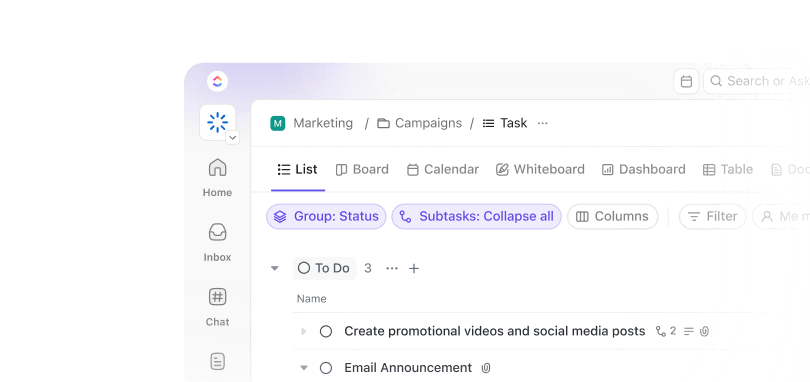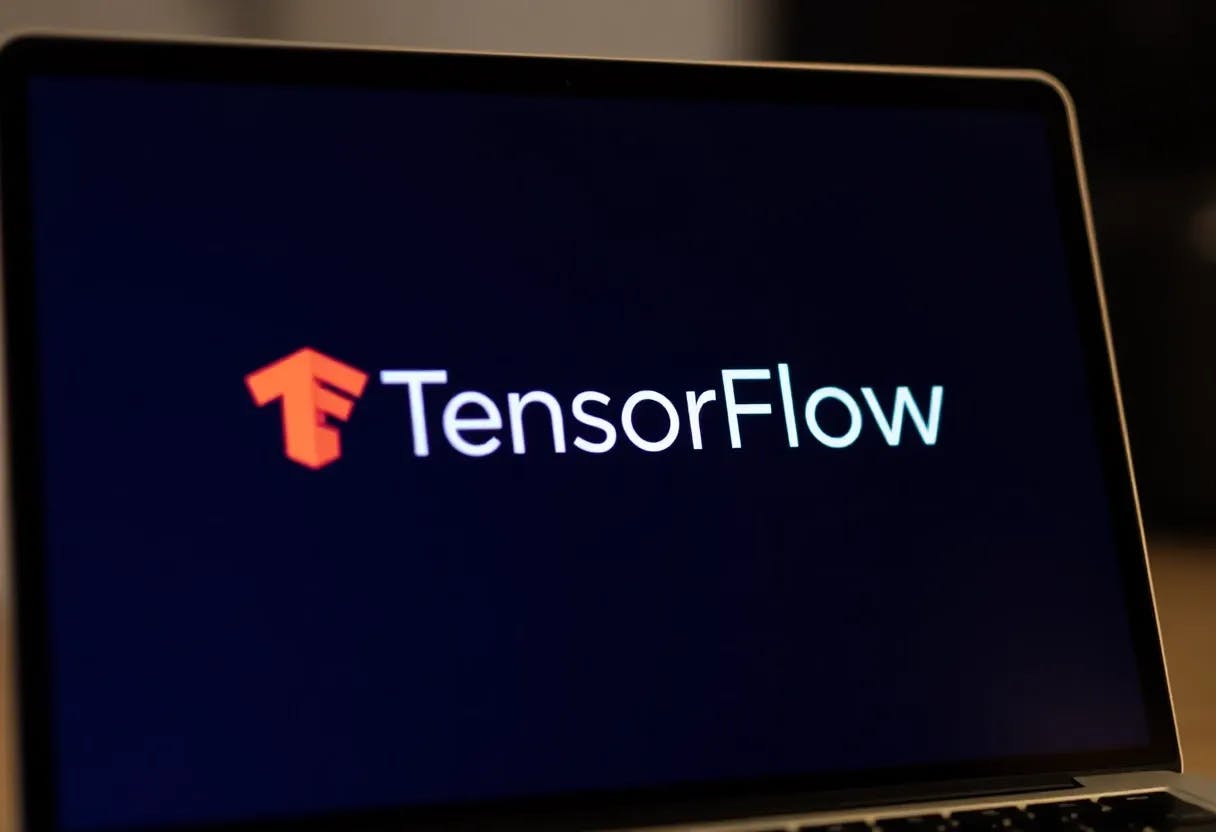“Communication is key” is something we’ve all heard in life. While effective communication is the cornerstone of any personal relationship, it is equally, if not more, important in a professional setting.
A successful workplace thrives with horizontal communication. So whether you are talking to a colleague about a task or sending an email, you should practice the principles of efficient horizontal communication.
But before we dive into the nitty-gritty of this concept, let’s understand what horizontal communication is and how it impacts interactions in the workplace.
What is Horizontal Communication at Work?
What is Horizontal Communication?
Horizontal communication comprises the interactions between people or departments working at the same level in an organization. It is also known as lateral communication and is as significant for the company as external communication.
In the book Organizational Communication by Michael J. Papa, horizontal communication is defined as the ‘flow of messages across functional areas’ in a particular level of an organization. When people communicate directly and effectively with their peers, it becomes easier to achieve ‘problem-solving, information sharing across different work groups, and task coordination between departments or project teams.’
Whether you are involved in a small or large business, internal communication flows essentially set the tone of an office atmosphere and help build interpersonal relationships in the workplace.
This communication can take place in person or via phone and email. But whichever route it takes, it directly affects productivity and business performance. That’s why we must understand and practice effective communication at work.
Understanding Horizontal or al Communication
Every workplace needs regular communication to operate smoothly.
While informal personal interactions help build interpersonal relationships with your colleagues, effective work communication is key to growth in any organization.
The official communication flow may include task instructions, project update emails, asking for help, etc. Strictly in a workspace context, these come under the blanket of horizontal communication.
For example, your agency’s graphics department needs to brief the copywriting department about changes in icons and themes for the next ad campaign. They may hold a meeting to discuss this and also send out an email highlighting the new standards.
So basically, an interaction counts as horizontal communication if it:
- Occurs with people or units at the same hierarchical level
- Is somewhat informal and less structured
- Aims to achieve collaboration and problem-solving
- Facilitates coordination, information sharing, and conflict resolution
The chain of communication in these cases can be lengthy, time-consuming, and distracting. Before you know it, you will have spent half your workday sending and receiving emails, memos, etc.
Pro Tip: Use Email Management and proofing capabilities to ensure your communication stays organized and easily accessible. It acts as a central hub to keep everything streamlined and in one place, replacing the need to jump between your inbox and various proofing tools. You can even use it to turn specific emails into tasks in .

Key characteristics of effective Horizontal Communication
Effective horizontal communication has a few distinct characteristics:
- Clarity: The communication is clear and goal-based, in a format understood and interpreted by the receiver
- Active listening: The goal is to listen well and discuss any doubts or hurdles upfront
- Transparency: The mode, content, and intent of the communication encourage building trust, transparency, and accountability
- Collaboration: Horizontal communication aims to optimize collaborative efforts and remove silos from the workflow for smooth business operations
- Driving innovation: By making it easy for teams to share ideas, it helps promote innovation and out-of-the-box approaches
- Following up: Those involved derive conclusions from the communication and follow up with discussions or actions as needed
- Supportive: Teams that manage horizontal communication effectively provide a safe space for members to share their thoughts and ideas confidently
At its best, horizontal communication encourages teamwork, boosts accountability, and creates visibility among peers. It enforces the feeling of working towards a common goal in an organization, which becomes easier with the right communication tools.
AI-powered workplace communication tools help you centralize all interactions and keep teams aligned, with a focus on the key characteristics of effective communication.
Primarily, horizontal communication differs from the other two types of communication in the workplace: diagonal and vertical communication.
Horizontal vs. Diagonal Communication
While horizontal communication occurs between individuals or departments at the same level, diagonal communication is more hybrid.
It involves both downward communication (with employees at lower levels of the hierarchy) and upward communication (with those at higher levels of the hierarchy), irrespective of their department.
Let’s say you’re a sales manager tasked with running a seasonal campaign. You need to collaborate with marketing professionals and managers to create regular ad copies and newsletters for the same. All your communication flows regarding this would be considered diagonal.
Effective diagonal communication practices can improve a company’s productivity and employee satisfaction. The same can be said about vertical communication.
Horizontal vs. Vertical Communication
Vertical communication occurs between people belonging to two levels in the organizational hierarchy. This form of communication can be either upward or downward.
For instance, your company’s senior management holds an all-hands meeting to discuss the company budget and plans for the next financial year. They share their vision and decisions with everyone on the work floor, right down to lower-level employees at the bottom of the hierarchy.
The other way around would be when an employee reports to their senior manager about their progress on a project. This report is then communicated to the department’s vice president for better decision-making.
Both of these are apt examples of vertical communication.
Unlike horizontal communication structures, vertical communication has a stronger and clearer feedback channel, with less scope for arguing over the same issue.
However, horizontal communication is gaining momentum in the modern corporate landscape due to its transparent and flexible nature and positive impact on workplace culture.
Importance and Purpose of Horizontal Communication
At the risk of sounding repetitive, horizontal communication is key to fostering a healthy and collaborative work environment. It strengthens the four key pillars of a positive workplace culture: teamwork, efficiency, problem-solving, and job satisfaction.
Let’s learn more about the purpose and benefits of horizontal communication:
Boosts collaboration and teamwork
The success of any project depends on real-time collaboration between employees and departments. Problems become simpler to solve, and information easier to share. You can reduce bottlenecks and achieve quicker results for higher productivity.
For instance, if multiple people are working on a file simultaneously, it is best if there is an online version of the file with access permissions, where they can collaborate when needed and collectively finish the task quickly.
Enables quick and efficient information flow
Information flow doesn’t just mean sharing information through chats or emails; it also includes sharing data between processes and tools in the organization. Smart communication management tools encourage effective collaboration and information sharing while maintaining reporting hierarchies and involving all stakeholders.
You can keep track of your information channels and fall back on any thread as and when needed.
Improves problem-solving and conflict resolution
Conflicts and workflow hindrances are an inevitable part of any organization. Maintaining an organized lateral communication channel makes it easier to deal with such scenarios.
You can keep different people and teams in the loop and communicate across work groups. You can also find more transparent ways to resolve conflicts with a fair and informed decision-making process based on effective communication.
With effective lateral communication, you can encourage openness in interactions and invite people to share their ideas and perspectives. This gives rise to a more welcoming workplace atmosphere and improves the worker-company relationship to a great extent.
Whiteboards is the perfect place for you and your team members to ideate, visualize, and plan together. Everyone on your team can work on the Whiteboard together simultaneously, no matter where they are.


Horizontal Communication in Flat Organizations
The structure of your organization often determines how effectively you can communicate between departments. It can create and affect information deadlocks, communication silos, corporate delays, and so on.
It’s safe to say that a strictly siloed organizational structure prevents effective communication. The other alternative is a flat organization, which is when companies abolish departmental hierarchy. In this way, any communication in a flat organization is horizontal.
Some popular examples of flat organizations are Amazon, Netflix, and Spotify. These companies have tried to remove the mid-level management layer for quicker innovation and decision-making, leading to faster resolutions.
To put it simply, cross-functional work is about skipping hierarchies. Instead of waiting for bosses to connect, you can reach out to the other departments directly and collaborate to solve the problem faster.
In these cases, minimized hierarchy promotes collaborative communication, employee ambition, lateral learning, and more innovative thinking. Employees make independent decisions, which boosts ownership and strengthens the company’s knowledge pool.
Just like every other thing, horizontal communication is not all milk and honey; it comes with its own pros and cons.
Pros and Cons of Horizontal Communication
If practiced well, horizontal communication encourages effective teamwork, improved productivity, and reduced operational costs. It also instills a spirit of unity in workers, making them feel like they’re working towards a common goal.
If not managed correctly, horizontal communication can create bottlenecks in the business. Employees get stuck with the pitfalls of multichannel communication, lose track of their objectives, and introduce delays in the workflow.
Imagine how long it would take to read and respond to hundreds of emails, list important tasks, connect for feedback, and implement changes in a project. The bigger the volume of ineffective communication, the more difficult it is to achieve positive results.
Pros
In the best scenario, horizontal communication has manifold benefits:
- Improved job satisfaction: Employees feel more motivated in a flexible work culture where they are free to cross-communicate on a project
- Lower resolution times: Communicating directly with concerned people reduces problem resolution times by a large margin
- Quicker decision-making: Tapping into fewer managerial layers means you make quicker decisions and address issues in real time
- Improved communication: al communication improves working relationships and facilitates smoother collaboration
- Reduced miscommunication: When all stakeholders communicate openly, the chances of running into a misunderstanding are reduced greatly
Cons
The disadvantages of horizontal communication stem from when it’s not utilized or organized systematically, leading to the following:
- Lack of control: Managers and supervisors have less control over decisions in a horizontal approach
- Higher chances of conflict: The chances of conflict increase when the communication is between units at the same hierarchical level
- Wastage of time: If horizontal communication is not organized and tracked efficiently, it may lead to higher time consumption on menial issues
- Greater confusion: When there are multiple communication channels to maintain, an employee may get confused daily
- Information silos: There is nothing to ensure all relevant information has been shared with the stakeholders, which may lead to a loss of knowledge and create silos
- Informal approach: Horizontal communication is often informal and may not comply with corporate policies in some instances
How to Mitigate the Challenges
The cons do seem concerning, but there are simple measures you can take to mitigate the risks of horizontal communication.
Keep managers and supervisors in the loop
The best way to regulate lateral communication is to keep supervisors in the loop. This ensures your higher-ups are updated about the status of tasks and privy to the information exchange. This can also help you in tricky situations where you might need a supervisor involved. It also allows supervisors to create reports about a project and communicate with other teams if necessary.
Reduce excessive emails by adopting messaging channels.
A centralized communication software prevents communication overload by replacing most email communication with real-time chats through messaging platforms. It is more effective and saves time—people tend to respond faster to short chat messages than emails. So, if you need quick help from an SME on a concept, you don’t have to wait for their email response. Messaging is smarter and faster.
Chat offers a streamlined solution for your workplace communication needs with advanced features like assigning comments and tagging people. Create chat rooms for specific projects, teams, or topics, keeping conversations organized and avoiding information overload.
Determine your hours of availability
It is important to maintain strict hours when relying mostly on horizontal communication. Your colleagues may think you are available round the clock and may reach out at odd hours with queries and requests. Avoid that by setting hard boundaries on your availability and getting on a notification schedule so that you only receive messages during working hours.
Most messaging platforms have a ‘do not disturb’ feature that lets you pause notifications for a certain time period every day. Use it and mute and silent options for a better work-life balance.
Set communication goals
Your communication goals must be SMART:
- Specific
- Measurable
- Achievable
- Relevant
- Time-bound


Use Goals to set clear goals for your communications to ensure you stay on track, complete tasks on time, and optimize your productivity. The larger goals can be easily broken down into Tasks for better results. These tasks can highlight communication needs, like creating reports or sharing updates with stakeholders.
Doing so needs a few informed strategies for the overall enhancement of collaboration.
Strategies for Enhancing Horizontal Communication
Adopt a project management tool
An intelligent project management software has multiple communication channels for collaboration, like chat or instant messaging, documentation, video calls, and inboxes. It helps you bring multi-platform communication under one umbrella and also automates tasks like meeting reminders and out-of-office notifications.
Use AI-powered to find a one-stop solution for all your communication and collaboration needs in the workplace.
Organize your work, chat with team members, assign action items to teammates, embed and share links, share docs, and fine-tune your message with rich editing. These features can enhance team communication for better performance management.
Leverage the power of AI with Brain to improve your written communication. Brain can automatically summarize lengthy documents, emails, or discussions within tasks. This can help colleagues working in different departments quickly grasp the key points from each other’s work, improving understanding and information flows.


Use communication plan templates
Communication templates are a solid resource pool for planning business interactions. They have Custom Fields, views, and project management features to help you create personalized messages and coordinate conversations with stakeholders.
A communication plan helps you to:
- Improve the quality of communication
- Organize interactions based on organizational goals, timelines, and departments
- Standardize your message
- Focus on key metrics with quick turnarounds
Communication plan templates can play a key role in improving collaboration between team members. A template helps you create a compelling message by removing fluff and effectively targeting your desired audience.
Using customizable templates for your communication plan also lets you focus on the right audience channels and form of communication, create useful CTAs, plan and organize your communication strategy around the business, and keep your style and tone consistent.
Improve collaboration and track your efforts using the Communication Plan Template. Tailor the plan to your specific business needs by adding Custom Fields, statuses, and views. Features like due dates, task comments, automation, AI, and more help you utilize this template effectively for both internal and external communication.
Pro Tip: Use Brain to generate your own unique templates for meeting agendas or collaboration plans


Team up with HR
Your company’s human resources department can be a helpful ally in ensuring horizontal communication takes place. They can officially encourage different departments to interact more, share ideas, innovate, collaborate, and resolve conflicts constructively.
Each company has its policies for handling communication issues, but a few standard measures can help things run smoothly in all organizational structures:
- Establishing standard communication channels like digital platforms and regular check-in meetings
- Encouraging all stakeholders to conduct and attend meetings and presentations
- Getting in touch with employees to identify their pain points and introduce measures to tackle them
- Analyzing silos and working towards removing them through better collaboration
Templates for HR and Recruiting are ideal for supporting lateral communication and building content for multiple scenarios, such as reports, annual goals, application forms, a company wiki, and so on.
Audit internal communication
If you don’t track and analyze communications, how will you find out what’s going wrong and why?
Every organization benefits from internal audits. These should be focused mainly on identifying low-performing areas of the workflow and optimizing them for improved results. Regular analysis and feedback implementation can help maximize productivity and weed out ineffective communication channels.
Craft an effective horizontal communication strategy
Communication strategies are highly customizable, depending on the requirements and goals of your organization.
Creating an effective horizontal communication strategy has major benefits for a workplace as it:
- Helps in better knowledge distribution by standardizing scheduled meetings, newsletters, performance reviews, and so on
- Helps employees polish their skills and provides them with the tools needed to perform their jobs efficiently
- Ensures your organization hits the important KPIs regularly
- Encourages collaboration in problem-solving
- Decreases the number of long and redundant meetings
- Promotes alignment between different departments and teams situated in different locations and time zones
Excel at Horizontal Communication with
Now that you have a fair idea of horizontal communication and how it benefits your work culture, the next step is to decide on a suitable collaboration platform for your organization. The right platform reinforces all the benefits of lateral communication, like transparency, flexibility, teamwork, and productivity in interactions.
All you need is to get everyone on the same page and remove communication issues. Get on board and revolutionize your workday by improving collaboration, increasing visibility, automating mundane tasks, and always delivering projects on time.
Sign up for free on the platform and get started with next-gen communication within seconds!


Everything you need to stay organized and get work done.













